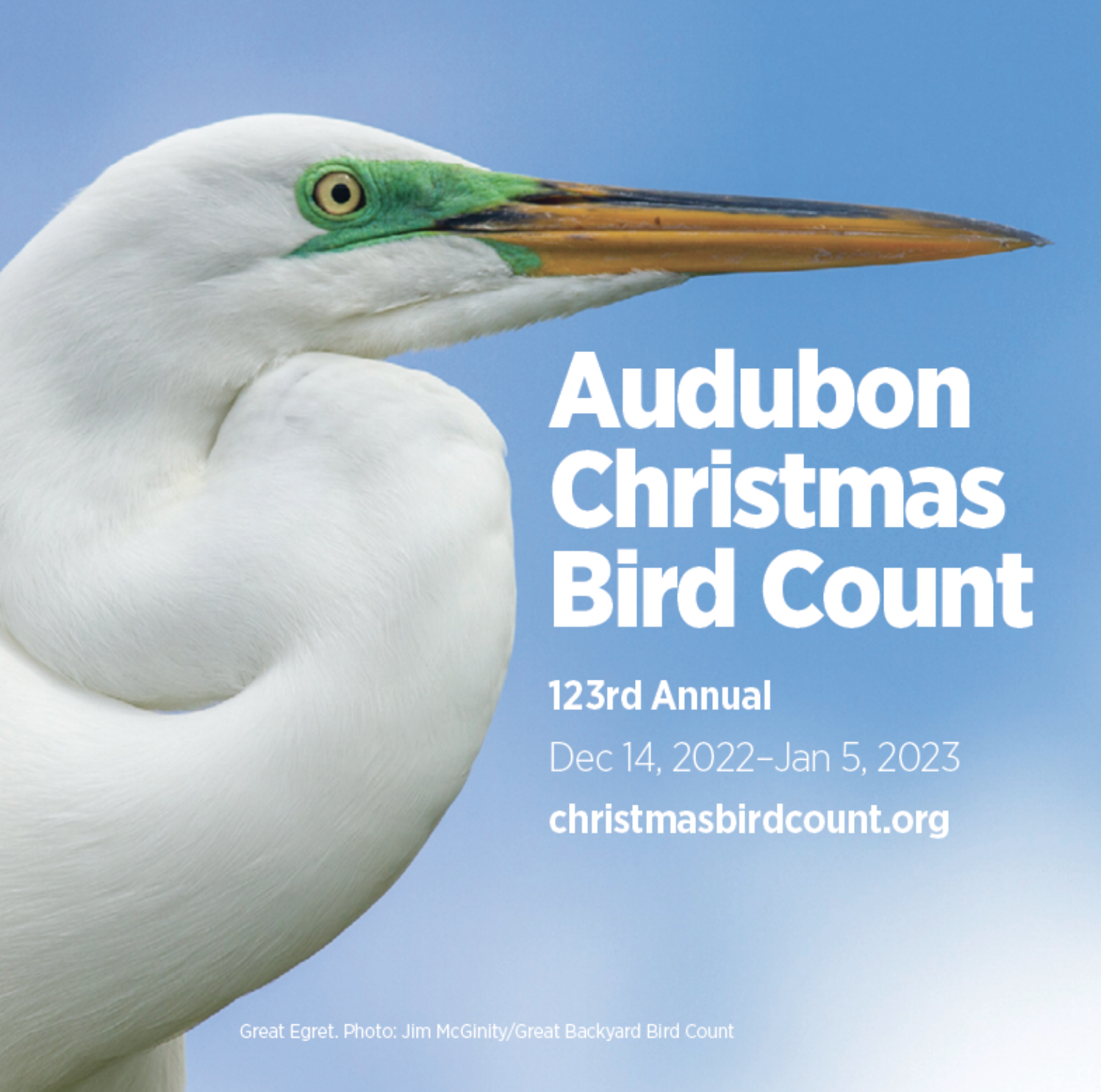The National Audubon Society invites birdwatchers to participate in the longest-running community science survey, the annual Audubon Christmas Bird Count (CBC). On Saturday December 17th, birders and nature enthusiasts in Tavernier and Plantation Key will take part in this tradition, many rising before dawn to participate.
“The CBC is a great event!” says Emily Johnson, Research Associate at Audubon’s Everglades Science Center. “I’ve been participating in Christmas Bird Counts since I first became interested in birds – I love that they bring birders together across all ages, skill levels, and communities.”
This year, the Audubon Christmas Bird Count will mobilize nearly 80,000 volunteer bird counters in more than 2,600 locations across the United States, Canada, the Caribbean and Latin America. The Audubon Christmas Bird Count utilizes the power of volunteers to track the health of bird populations at a scale that scientists could never accomplish alone. Data compiled in Tavernier will record every individual bird and bird species seen in a specified area, contributing to a vast community science network that continues a tradition stretching back 120 years.
“The Christmas Bird Count is a great tradition and opportunity for everyone to be a part of 123 years of ongoing community science,” said Geoff LeBaron, Audubon’s Christmas Bird Count Director, who first started leading the community science effort in 1987. “Adding your observations to twelve decades of data helps scientists and conservationists discover trends that make our work more impactful. Participating in the Christmas Bird Count is a fun and meaningful way to spend a winter for anyone and everyone.”
When combined with other surveys such as the Breeding Bird Survey, Audubon’s Christmas Bird Count provides a picture of how the continent's bird populations have changed in time and space over the past hundred years. The long-term perspective is vital for conservationists. It informs strategies to protect birds and their habitat, and helps identify environmental issues with implications for people as well. Christmas Bird Count data have been used in more than 300 peer-reviewed articles.

Birders of all ages are welcome to contribute to this fun, nationwide community science project, which provides ornithologists with a crucial snapshot of our native bird populations during the winter months. Each individual count is performed in a count circle with a diameter of 15 miles. At least ten volunteers, including a compiler to coordinate the process, count in each circle. The volunteers break up into small parties and follow assigned routes, which change little from year to year, counting every bird they see. In most count circles, some people also watch feeders instead of following routes. Interested birders must arrange with the count compiler in advance to participate. To sign up for the Florida Keys, please visit/contact Emily Johnson at emily.johnson@audubon.org. To look for a count circle near you go to Audubon’s map of CBC circles here. Using the map you can contact the circle compiler to arrange to participate.
The Audubon Christmas Bird Count is a free community science project organized by the National Audubon Society. Counts are open to birders of all skill levels and Audubon’s free Bird Guide app makes it even easier to learn more. For more information and to find a count near you visit www.christmasbirdcount.org.



